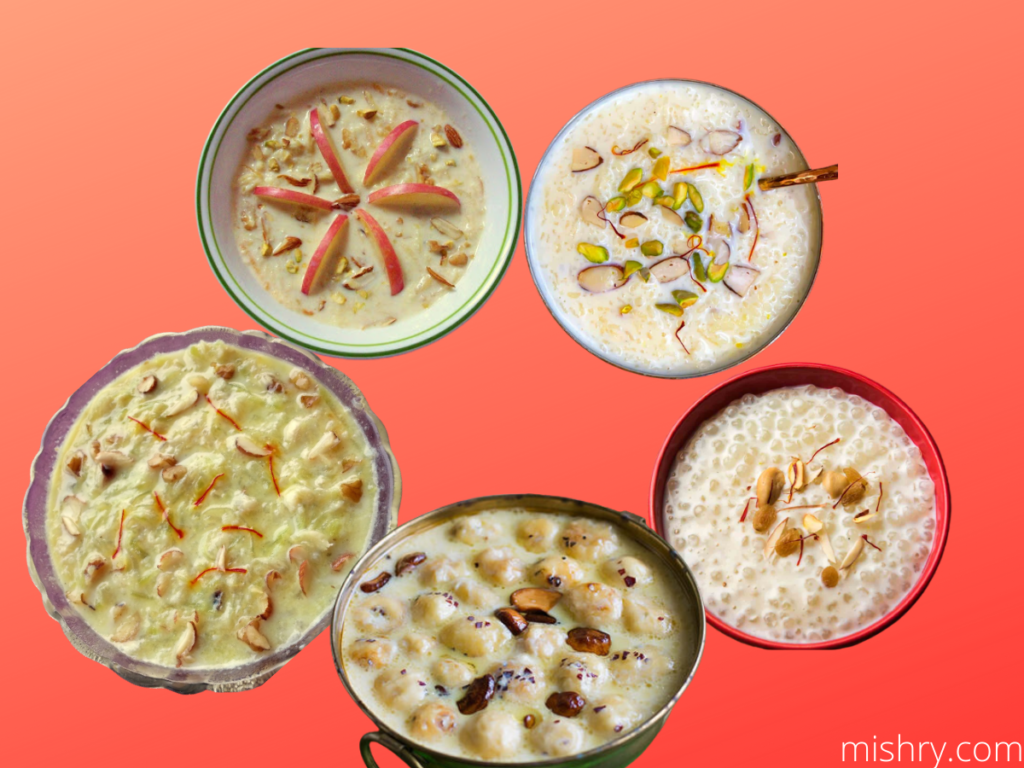How To Make Kheer -24
Kheer
Indian rice pudding, or kheer, is a traditional and well-liked delicacy that is integral to Indian cooking. Often prepared for festivals, holidays, and special occasions, this creamy, sweet meal brings families together with its lovely flavor and cosy texture.
Although the classic Rice kheer is still a mainstay, there are a few interesting modifications that give this ageless delicacy a delicious touch.

What are the different types of Kheer?
As such Rice kheer is still a mainstay but we can make some different types of Kheer by slight changes in Ingredients. Below we are giving some Famoue Kheer types.
Sabudana Kheer:
Ingredients: cardamom, sugar, milk, almonds, and Sabudana (tapioca pearls).
Description: Sabudana gives kheer a delightfully chewy texture that makes it a distinctive and delectable variety that is typically savoured during fasting periods.
Follow Our Digiknowledge.co.in Page for Latest update about Bikes, Cars, Sports, , Life style and many more.
Kheer Kasdam:
Ingredients include rice, sugar, coconut, saffron, and khoya (reduced milk).
Rice balls covered in khoya make up this Bengali dessert, which has a complex flavour profile.
Kaddu Ki Chhotour:
Ingredients include almonds, ghee, sugar, pumpkin, and milk.
Description: A unique and healthful dessert is created when the creamy foundation combines with the mild sweetness of pumpkin.

Makhane Ki Kheer
Ingredients: cardamom, ghee, sugar, milk, and fox nuts (makhana).
Description: Those who like desserts with diverse textures will love the pleasant crunch that makhana provides to the kheer.
The Seviyan Kheer
Vermicelli, milk, sugar, ghee, and raisins are among the ingredients.
Seviyan, or thin noodles, give the kheer a distinct texture and provide a quick and simple substitute for regular rice kheer.
Grain Kheer:
Ingredients include almonds, sugar, cardamom, milk, and basmati rice.
Description: This is the traditional and evergreen variety, in which milk is slowly simmered with aromatic basmati rice to a rich, creamy consistency.
Badam Kheer:
Almonds, milk, sugar, saffron, and pistachios are among the ingredients.
The kheer is elevated by the richness of almonds, which give it a nutty flavor and a velvety texture.

How to Make Kheer- kheer recipe?
Ingredients list:
For rice kheer, use one cup of Basmati rice or your favourite grain.
four glasses of milk
One cup of sugar, adjusted to taste
Chopped nuts (almonds, cashews, and pistachios): 1/2 cup
1/2 tsp powdered cardamom
Optional saffron strands for flavour and colour
Guidelines:
Rinse the rice or selected ingredient well.
The milk should be brought to a boil in a heavy-based pan.
Once the rice has been rinsed, add the selected ingredient and boil over low heat, stirring constantly.
Stir in the sugar when the rice or ingredient is cooked and the mixture gets thick.
Stir in the cardamom powder, chopped nuts, and saffron threads.
Simmer the kheer for a little while longer till it becomes creamy.
Before serving, remove from the heat and allow to cool slightly.
What are the advantages of Kheer ?
The carbs:
The components and technique of preparation used to make kheer can affect its nutritional value. An outline of the nutrients typically present in a classic rice kheer is provided here:
Rice and sugar are key sources of carbs in kheer. The body gets its energy from carbohydrates.
The protein
In kheer, milk is a good source of protein. Proteins are necessary for the body’s general operation and for muscle repair.
Carbohydrates:
The fat level is increased by milk, almonds, and any ghee that is added. Fats are necessary for the absorption of fat-soluble vitamins and the storage of energy.
Calcium.
Calcium, which is abundant in milk, is essential for healthy bones and teeth, nerve transmission, and blood coagulation.
Vitamins
Vitamins D, B12, and riboflavin are among the nutrients found in milk. Red blood cell production, energy metabolism, and bone health are all significantly impacted by these vitamins.
Mineral composition
Apart from calcium, milk provides nutrients such as phosphorus, magnesium, and potassium. Numerous physiological processes, such as bone health and electrolyte balance, depend on these minerals.
Iron:
Nuts and other ingredients may be included in some kheer variations, raising the iron content. For oxygen to be transported through the blood, iron is essential.
Fibre.
Remember that the kind of milk (whole, skim, etc.), the quantity of sugar used, and any extra components (fruits or nuts, for example) can all affect the nutritional profile of kheer.
Kheer is a dessert that is typically enjoyed in moderation because of its high sugar and calorie content, even though it can offer certain vital elements.
It’s recommended to think about the nutritional features of kheer in connection to your total diet if you have any particular dietary problems or health conditions.
Keer may have some dietary fibre in it, depending on the components used. Fibre supports intestinal health and facilitates digestion.
You may make a sweet, cosy delicacy that embodies Indian culinary traditions whether you stick to the classic rice kheer recipe or try something different with different ingredients.
How long does it take to make kheer?
Making kheer, depending on the recipe and quantity, might take one to one and a half to two hours. Milk, rice, sugar, and cardamom pods are simmered until the liquid thickens.
What is the ratio of rice to milk for kheer?
A cup and a half of rice to four cups of full-fat milk is the traditional ratio for making kheer.
What should you do if the kheer is too thick?
Add a little milk to the kheer if it’s too thick, then turn off the heat and allow it to cool.




